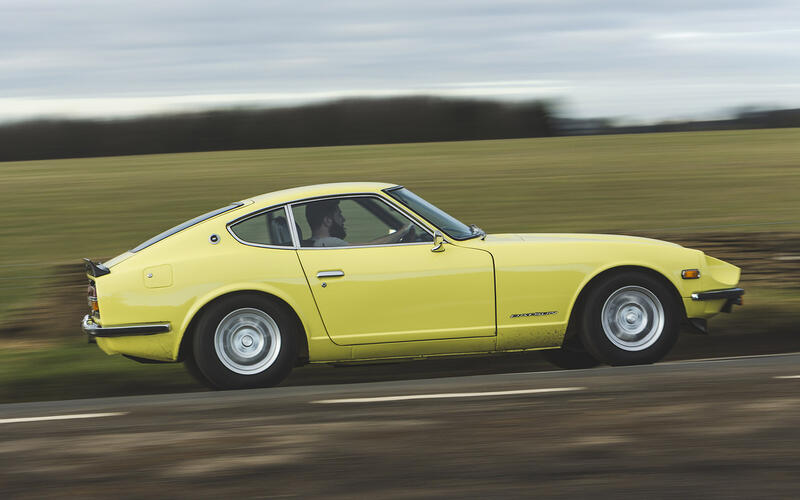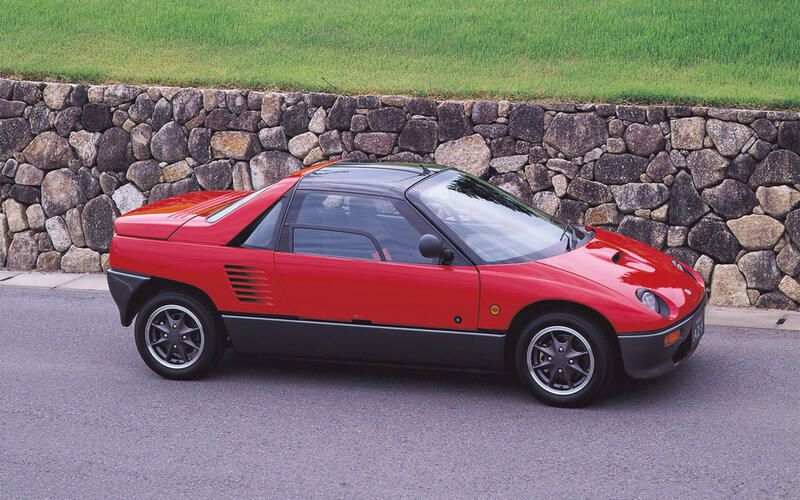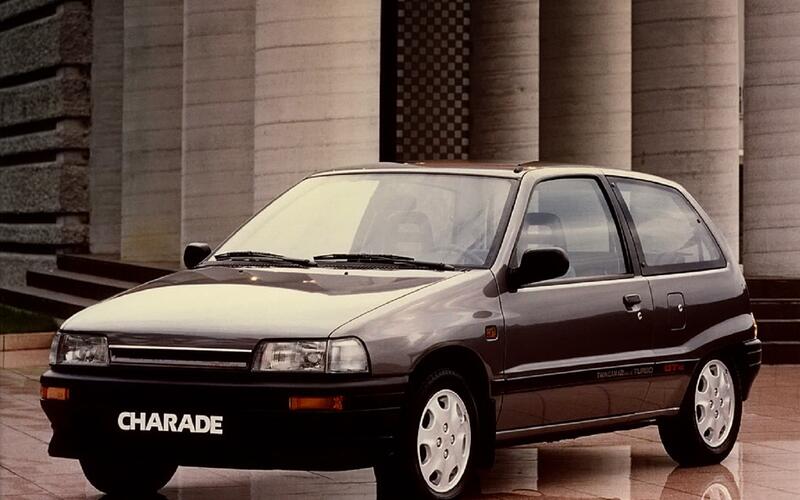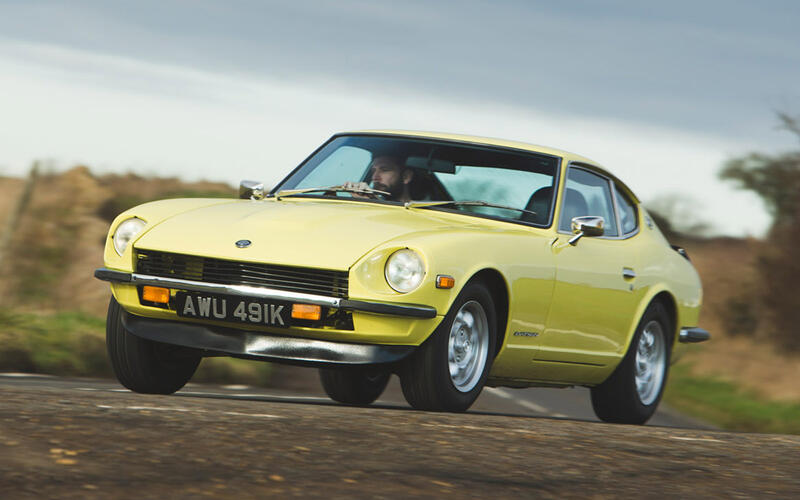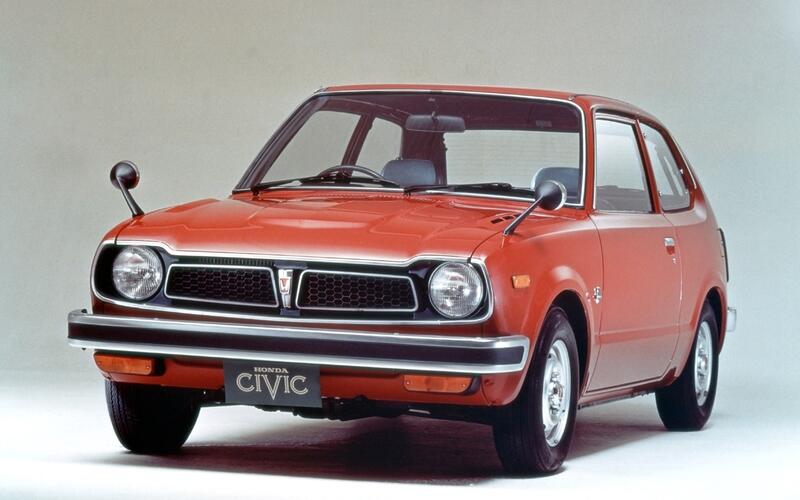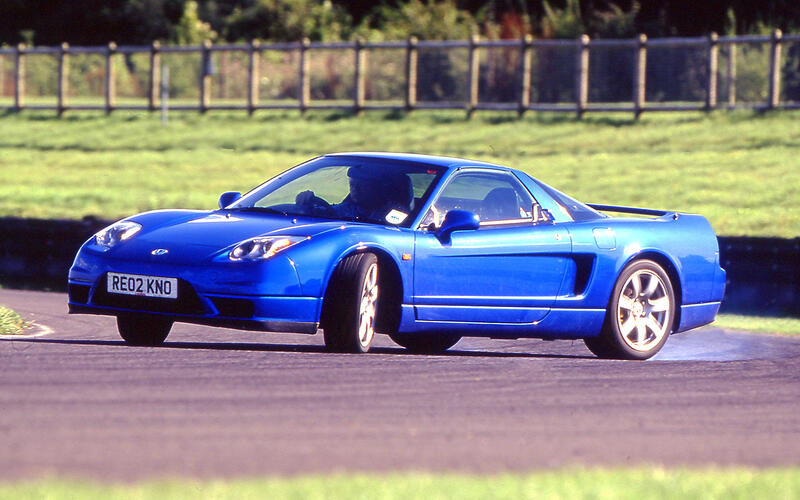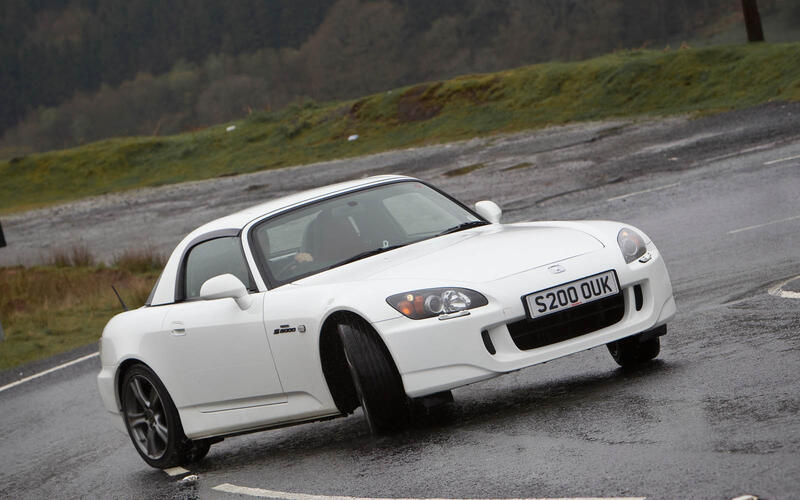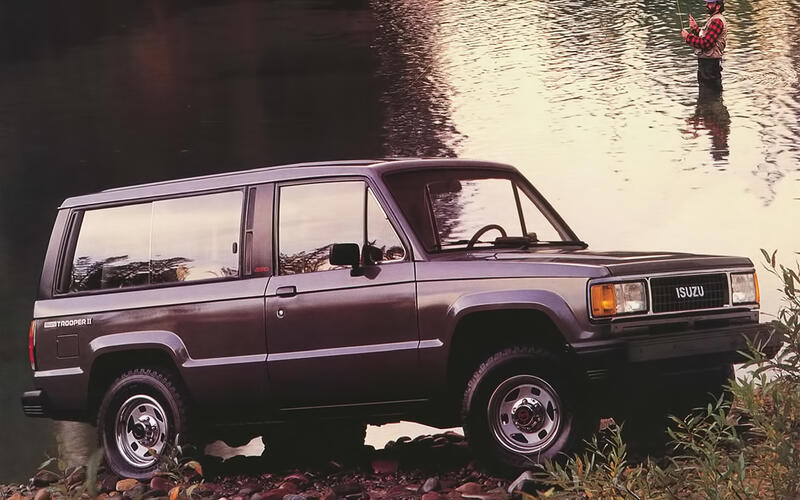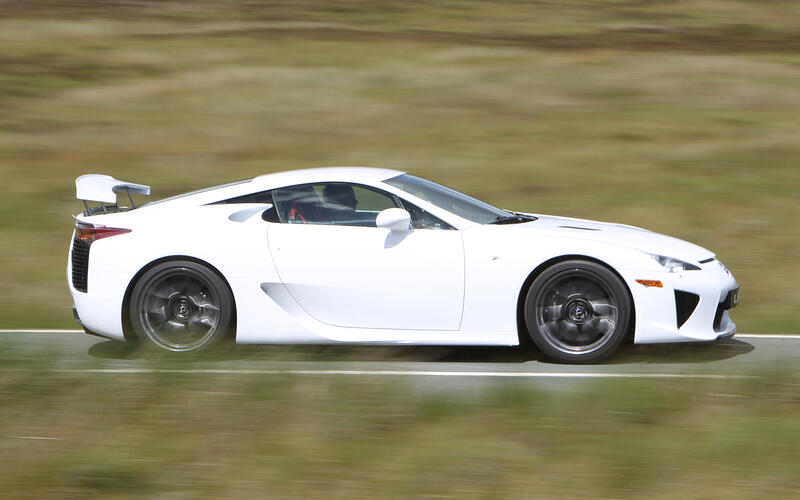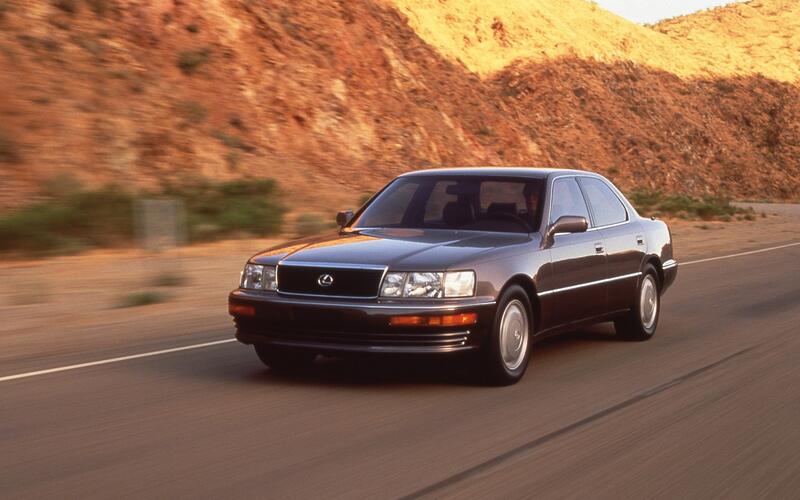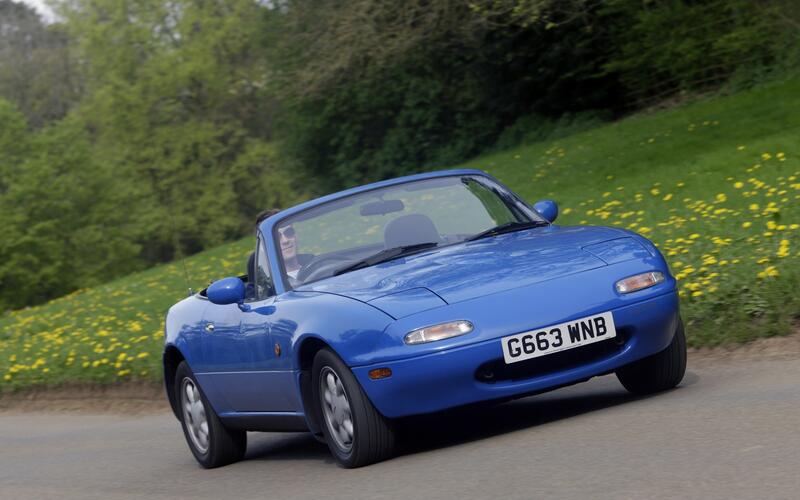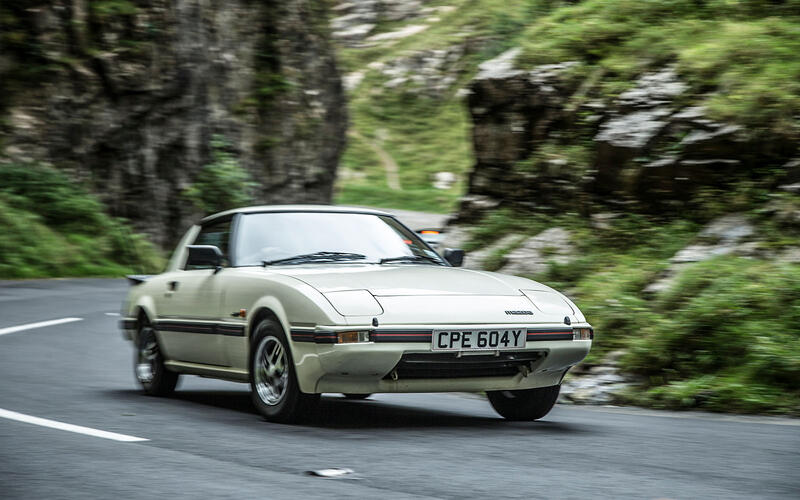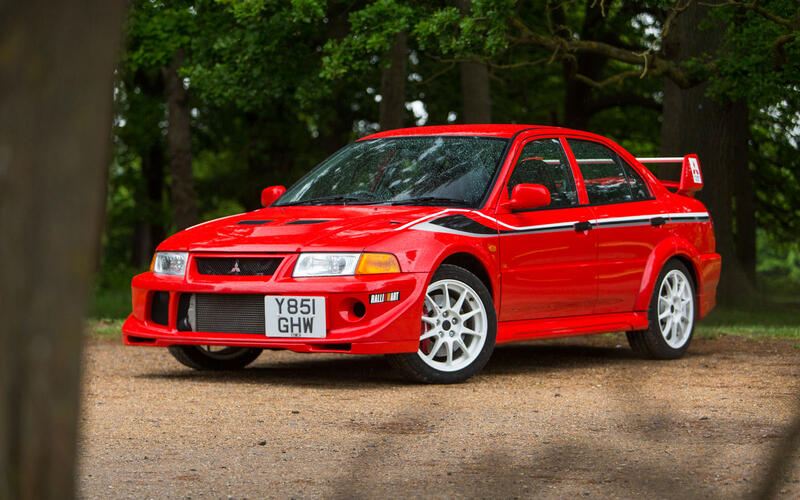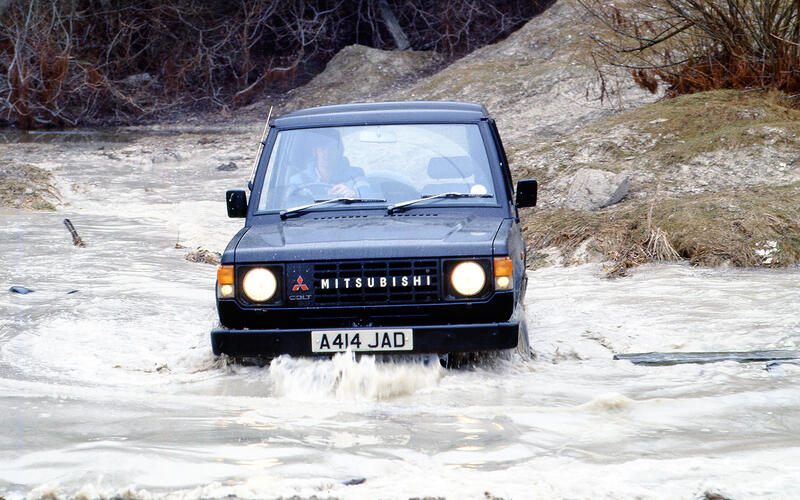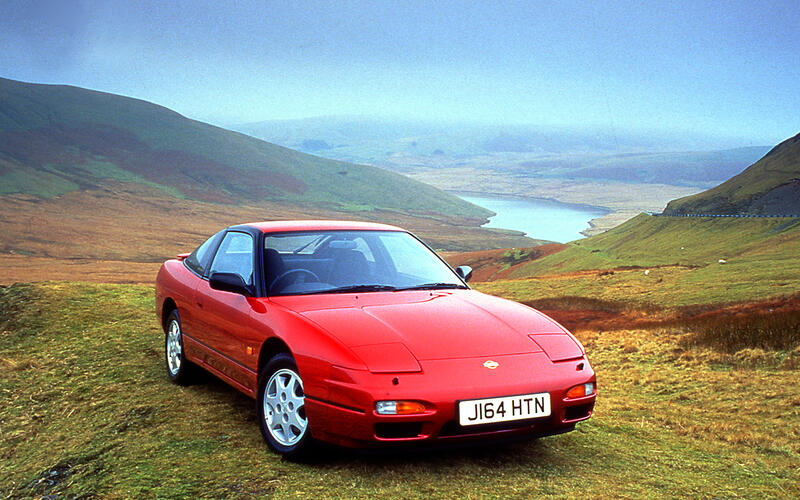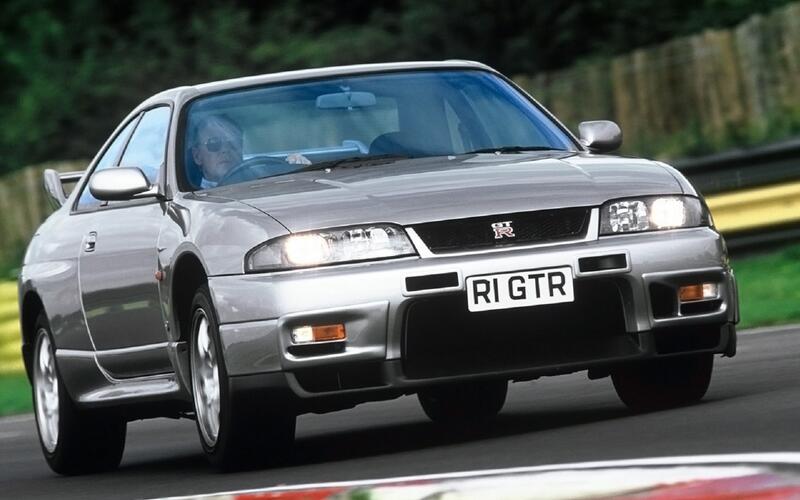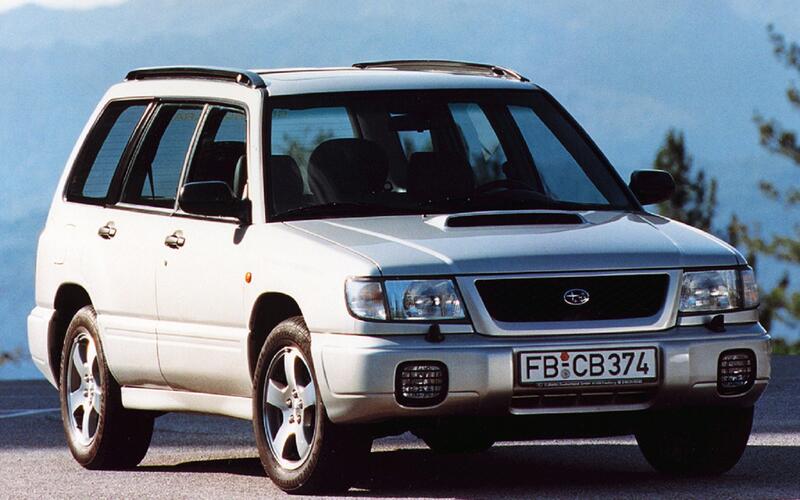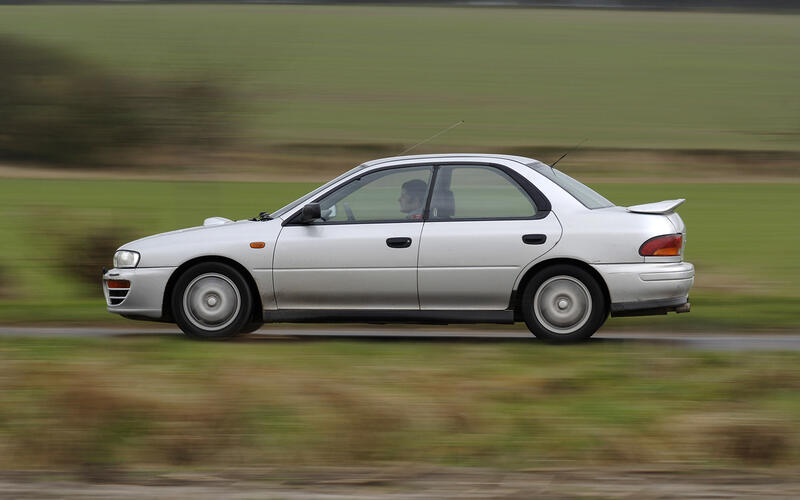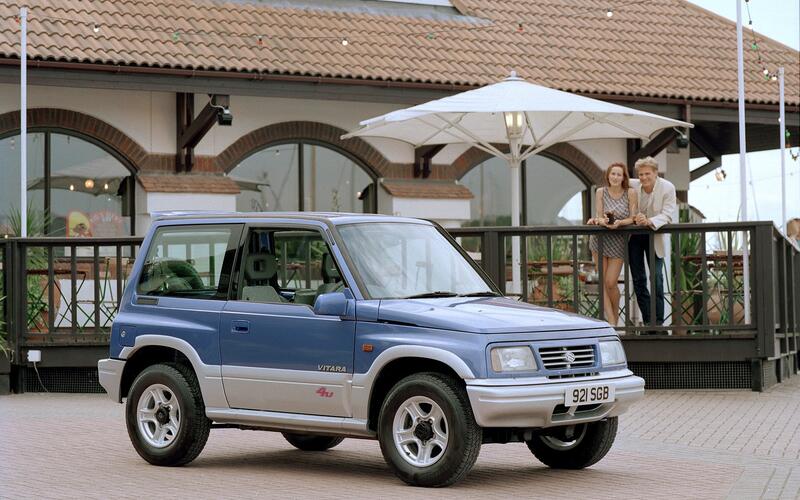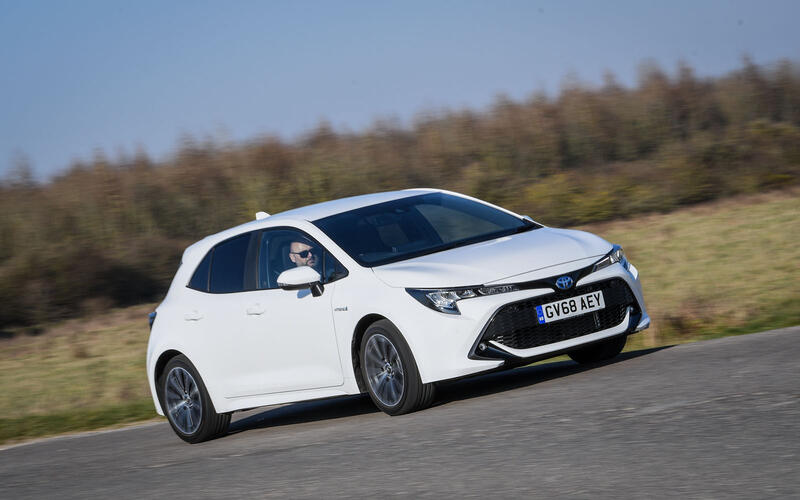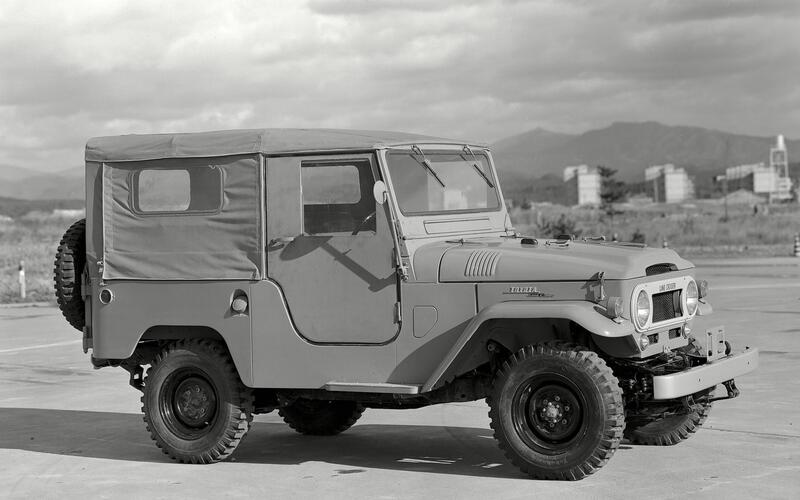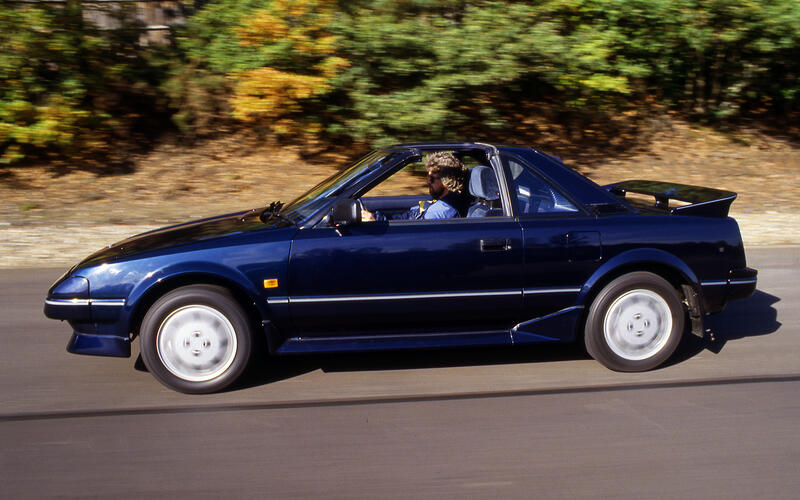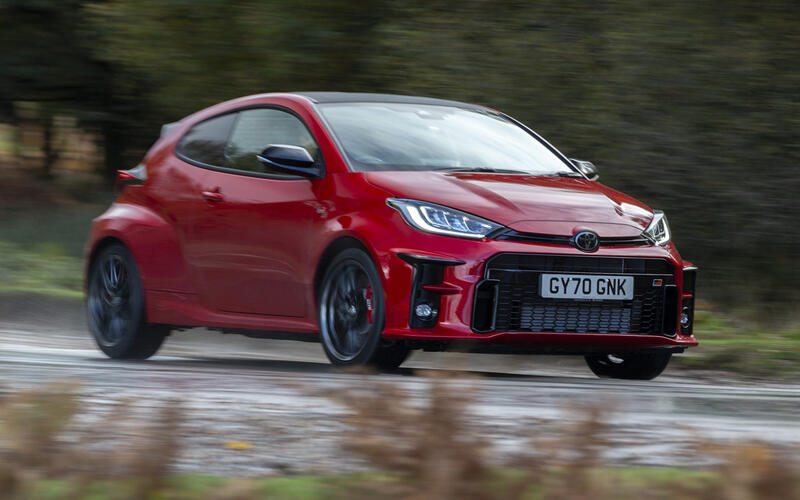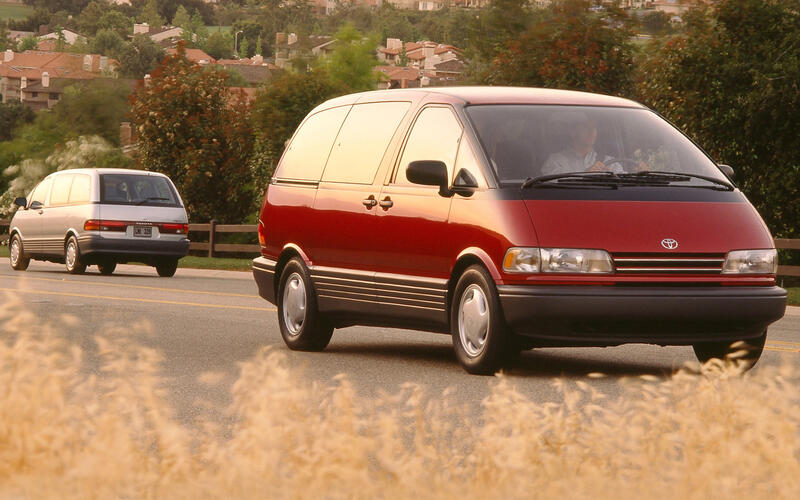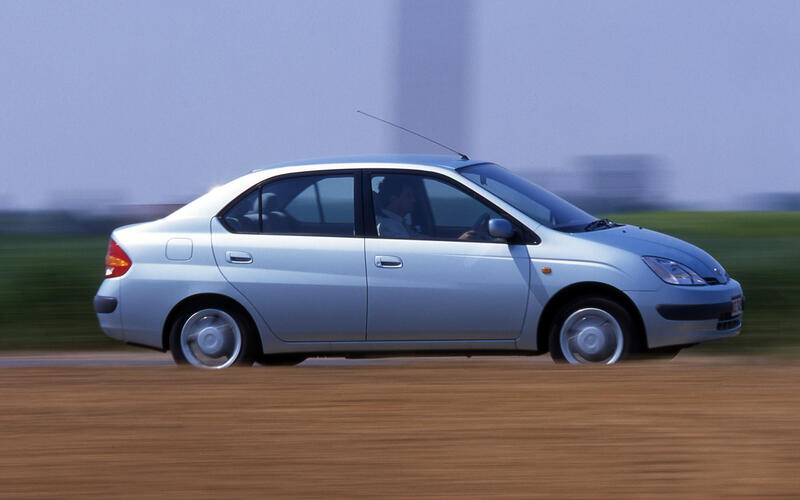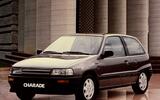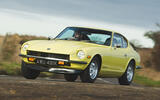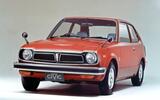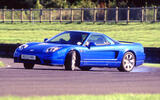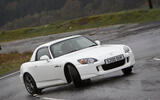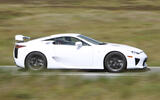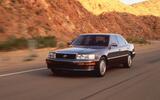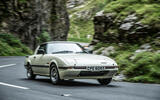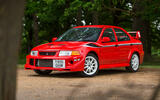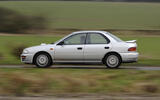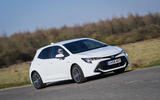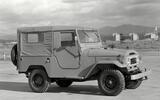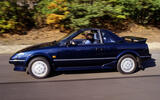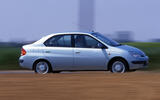 Slide of
Slide of
Japan has a long tradition of engineering excellence.
That has helped the country produce many of the world’s most interesting and entertaining cars. And as the home of roadside drinks machines selling hot coffee in a can - amongst other exotica - there's no surprise it's produced its fair share of oddities as well. Here’s our list of the best car from Japan, in alphabetical order.
 Slide of
Slide of
Autozam AZ-1
Miniaturisation is a Japanese art and the Autozam AZ-1 is a fine example of this. Built by Mazda, the AZ-1 met the strict kei car regulations yet also managed to be hugely desirable thanks to its mini supercar looks. The mid-mounted 657cc turbocharged three-cylinder engine developed only 63 hp, but it revved happily to 7000 RPM. Weighing only 720kg (1584lb), this was enough power to see the AZ-1 from 0-60mph in 8.0 seconds.
Mazda also offered uprated Mazdaspeed parts such as a bodykit, wheels, suspension and even a limited slip differential. There was also a Suzuki version called the Cara, which managed 531 sales, while the AZ-1 notched up 4392 to make it a rare and collectible car today.
 Slide of
Slide of
Daihatsu Charade GTti
One hundred brake horsepower-per-liter was the stuff of race cars in the late 1990s, yet Daihatsu squeezed this much from the Charade’s 993cc three-pot motor. Turbocharging helped achieve this magic figure and the rev-hungry engine helped the lightweight hot hatch from rest to 60mph in 7.7 seconds.
Fizzing performance wasn’t the Charade GTti’s only party trick as it handled well too, matching the taut looks. The GTi that replaced the GTti in 1993 was fun, but not a patch on the original that also proved to be a surprisingly able rally car with success in events as diverse as the Lombard RAC and Safari rallies.
 Slide of
Slide of
Datsun 240Z
As Japan was revolutionising the motorcycle world with affordable, reliable machines in the late 1960s, the Datsun 240Z did the same for sports cars. Launched in 1969, the 240Z outdid the MGB thanks to a six-cylinder engine with 151 hp, good enough for 0-60mph in 8.1 seconds. There was no drop-top model, but that didn’t stop buyers snapping up 622,649 Zs if you include the 260 model that followed in 1974. It was a particular hit in the US.
It’s easy to see why the Datsun was so successful with its Albrecht Goertz-penned sleek coupe shape. It also handled superbly and didn’t need the constant mechanical attention of the rivals from Europe.
 Slide of
Slide of
Honda Civic
One of the longest running dynasties in Japanese automotive manufacturing, the Honda Civic arrived in 1973 and the name is still going strong. In that time, the Civic has grown in size and ambition, as well as broadening to include coupe, hot hatch and hybrid models. As a barometer for the motoring world, few are more in tune than the Civic.
The Civic also helped the Triumph name soldier on into the 1980s with the Acclaim model that was based on the second generation of Honda’s small hatch. Rover also based its 200 and 400 models on the Civic. To date, more than 28 million Civics of all generations have been sold.
 Slide of
Slide of
Honda NSX
When Honda set its mind to creating the best supercar, the result was the 1990 NSX. Everything about it was created from scratch, including the 2977cc V6 engine. It might have shared the same bore and stroke as the Legend saloon’s V6 motor, but every casting and detail was different such was Honda’s determination to perfect the NSX. Even Ayrton Senna helped develop the all-aluminium chassis’ dynamics.
The NSX could hit 157mph, cover 0-60mph in 5.3 seconds and was everyday usable. Later improvements made it even quicker, yet Honda rarely sold more than 1000 NSXs per year between 1990 and 2005 due to badge snobbery. Those snobs missed out on a car that was properly special.
 Slide of
Slide of
Honda S2000
As birthday presents go, Honda did a lot better than a book token and pair of socks with the S2000. To mark its 50th year, Honda came up with an edgy two-seater sports car with a deliciously rev-hungry 2.0-liter engine. The all-aluminium motor used V-TEC variable valve timing to deliver 243 hp, making it the most powerful engine-per-litre at its 1999 launch.
More than 100,000 bought Honda’s sports car gift to the world during a 10-year production life. Even then, the S2000 still cut a dash against the likes of the BMW Z4 and Porsche Boxster to underline just how special it was and still remains to this day.
 Slide of
Slide of
Isuzu Trooper
The first generation of Isuzu Trooper made its debut in 1981, though it didn’t arrive in most parts of Europe until 1987. When it did, it was an instant threat to the Land Rover Defender and the Toyota Land Cruiser. Here was a serious off-roader that could also be used on the motorway, especially when larger gasoline and diesel engines arrived in 1988.
A second generation of Trooper arrived in 1991 just in time to do battle with the Land Rover Discovery. Not as innovative as the Discovery in its design, the Trooper still found plenty of buyers to add to the more than half a million first gen cars sold. The original Trooper ended up being sold under 14 different names.
 Slide of
Slide of
Lexus LFA
More than most countries, Japan likes to throw up bespoke models every now again simply to let the world know what great engineers it has. The Lexus LFA was only ever intended for a 500-car production run, yet it also recalibrated how supercars were built. Almost all of the LFA’s structure is carbonfibre, while the 4.8-liter V10 engine revved so quickly Lexus had to design a digital rev counter to keep up with it.
Lexus knew it was on to a winner and, to prevent speculators cashing in on it, US buyers could only sell their car back to the dealer for market value or the original list price depending on which was lower. The LFA left a lasting impression and its styling can still be seen in the influence it has had on today’s Toyota Supra.
 Slide of
Slide of
Lexus LS
Everything about the Lexus LS was new when it was unveiled in 1989, even the company. It may have been a luxury division of Toyota, but Lexus was very much a standalone brand that aimed to take on and beat the high-end establishment from Europe and the US. To do that, Lexus figured it had to be better in every respect, and it was.
The LS’s 4.0-liter V8 was eerily smooth and quiet, the ride sumptuously smooth, and the equipment made a Mercedes S-Class look bleak by comparison. Attention to detail is what set the LS apart, and it was the first car to offer 0.5-degree increments for its digitally controlled air conditioning. The clinical precision wasn’t to all executive buyers’ tastes – and in most places the brand image still isn’t what it could be compared to older rivals - but the LS rattled its rivals into improving their game substantially; they started by buying LSs and dismantling them to discover their secrets.
 Slide of
Slide of
Mazda MX-5
On so many levels, the Mazda MX-5 is possibly the most significant car ever to come from Japan. It saved the open-top two seat sports car class from oblivion, has swelled Mazda’s coffers for more than three decades, and has allowed millions of drivers to enjoy the pleasure of a simple roadster. The fact that more than a million MX-5s across four generations have been built says it all.
Despite this, the MX-5 has never rested on its considerable laurels and Mazda has steadily updated and improved the MX-5 throughout its life. Even then, Mazda has been careful not to just throw more power at the car, instead maintaining the right balance of performance, grip and rear-drive handling.
 Slide of
Slide of
Mazda RX-7
Mazda’s commitment to the rotary engine is as laudable as it is baffling to some. The RX-7 wasn’t the first Mazda to use this smooth, revvy motor but it was its natural home as a stylish sports car. In its first generation, the RX-7 was a clear swipe at the Porsche 924, but later RX-7s moved further into the German’s heartland territory with more power and performance.
In each case, the RX-7 revelled in being different and those who bought into it loved it all more because of that engine and approach. You also had to be resigned to steep running costs, but the rewards were worth it as the compact engine was mounted low in the chassis to deliver superb handling. Sadly, later RX-7 models were unable to replicate the success of the first car that scored nearly half a million sales.
 Slide of
Slide of
Mitsubishi Lancer Evolution
The Mitsubishi Lancer Evolution, or Evo as it quickly became known, started life as a pared back machine. It even has steel wheels to save weight, while the 247 hp four-cylinder engine drove all four wheels to homologate the car for rallying.
It proved a successful formula and several generations followed using the same recipe, notably the Evo VI thanks to Tommi Mäkinen’s title wins in the World Rally Championship. However, even four WRC titles were not enough to convince many buyers to choose the ungainly Evolution Wagon estate, with only 2924 built.
 Slide of
Slide of
Mitsubishi Shogun
The Mitsubishi Shogun, or Pajero as it was known in most parts of the world or Montero in Spain, arrived in 1981. It fitted neatly into a gap between the Land Rover Defender and Range Rover, offering the former’s size and off-road ability with plenty of the latter’s creature comforts. Buyers loved it and a long-wheelbase model arrived in 1983. Engines were tough petrol and diesels, while a smooth 3.0-liter V6 joined the range. It was also used in the second-generation Shogun with smoothed out styling that was a direct and serious rival to the Land Rover Discovery.
Mitsubishi proved the Shogun’s worth by entering the Paris-Dakar endurance race, winning the Cars Class 12 times between 1984 and 2007. It also notched up 150 stage wins in that time to be the most successful manufacturer in the event’s history.
 Slide of
Slide of
Nissan 200SX
Nissan wasn’t shy about launching sports cars in 1989. That year saw the 300ZX and Skyline GT-R arrive, but it’s the 200SX that was the big seller. It achieved more than 1 million sales in just four years up to its replacement in 1993 by its successor. The 1989 S13 model’s clean lines were complimented by a turbocharged 1.8-liter engine, with 166 hp and later 173 hp, and excellent rear-wheel drive dynamics.
Called Silvia in most markets, this line of sports cars first arrived in 1975 and lasted across six generations until 2002. There was also a 180SX version of the S13 model that Nissan continued to offer in some markets alongside the new S14, but not in Europe. Now regarded as one of the best sports coupes to come out of Japan, the 200SX is rightly in the sights of collectors.
 Slide of
Slide of
Nissan GT-R
The GT-R badge has a history stretching back to 1969, but it’s the later models that are the definitive versions for most Nissan aficionados. These models got rolling with the 1989 R32 that went on to enjoy huge motorsport success, dominating Japanese and Australian touring car series. The R33 that followed in 1995 was an instant hit. Nissan followed up with the R34 in 1998, while the present GT-R pitched up in late 2007.
What all of these cars share is an uncanny ability to make shattering acceleration, grip and handling all very accessible in a car also capable of carrying four people and meandering to the supermarket. The only problem with the earlier models now is finding one that hasn’t been modified or drifted to within an inch of its life.
 Slide of
Slide of
Subaru Forester
Subaru was among the first to spot that SUV buyers wanted a car more suited to on-road use than one for plugging away through mud. The Forester was the result of this thinking, based on the Impreza floorpan but with more ride height and four-wheel drive as standard. Taller than the Impreza wagon, the Forester was brilliantly practical and soon gained a cult following.
That keen customer base was later rewarded with the Turbo S model that had a 172 hp version of the Impreza’s flat-four motor. It was still quick across country roads, and if you wanted more pace there were STi versions available to import from Japan with 265 hp.
 Slide of
Slide of
Subaru Impreza
The standard Subaru Impreza was a decent car but, let’s be honest, it’s the Turbo 2000 and its derivatives that elevated this saloon and estate range to greatness. The Turbo started life with a modest 211 hp, but it gave Subaru the base for its new World Rally Championship car that quickly went on to be the car to beat and won Colin McRae his 1995 world title.
Later versions of quick Imprezas gained more power, less weight, and even fewer doors in the case of the two-door 22B. However, it was always the sensational balance of the fast Imprezas that gave them such a huge reputation and explains why they remain in big demand now.
 Slide of
Slide of
Suzuki Vitara
Suzuki has made many intriguing cars, but the 1988 Vitara stands out as arguably the very first lifestyle SUV. Its launch nipped in ahead of the Land Rover Discovery, which was a much larger machine, so the Vitara also had affordability on its side. Another factor in the Vitara’s favour was rapidly climbing insurance premiums for hot hatches which made drivers look for alternatives.
The Vitara fitted that bill perfectly as many were modified and personalised with wide wheels and tyres, bull bars, and graphics. Again, Suzuki got in there long before BMW made personalisation popular with its Mini. At its core, the Vitara was a simple, rugged car that worked as a family runabout.
 Slide of
Slide of
Toyota Corolla
The world’s best-selling car if you go by badge, the Toyota Corolla has been a constant since 1966. Over the course of 12 generations to date, it has racked up sales of around 50 million, putting the likes of the Ford Model T and Volkswagen Beetle in the sales shade. While rarely exciting, the Corolla earns its place among the best cars from Japan because it appeals to so many buyers.
The Corolla is also a car that has developed in sympathy with customer demands, so it has evolved continually throughout its life. This has seen it adopt hybrid technology before most rivals did, and Toyota keeps the sales going by offering the Corolla in a huge number of markets.
 Slide of
Slide of
Toyota Land Cruiser
Starting life as a go-anywhere vehicle for Japan’s National Police Reserve, the Toyota Land Cruiser has been in production in all its many guises since 1951. More than 11 million of the 4x4s have been built since then, all following the same principle of takings its occupants wherever they want to go regardless of the terrain.
The original Land Cruiser’s inspiration was clearly the Willys Jeep, but it found its own style with the 1960 40 Series. The J70 Land Cruiser launched in 1983 is still available in some locations such as Africa and Australia, but elsewhere, the Land Cruiser has developed into a more luxurious but no less able SUV that is widely regarded as the first choice for any off-road expedition.
 Slide of
Slide of
Toyota MR2
The Toyota MR2 was the first mid-engined production car to come out of Japan, for which it deserves credit. What elevates the MR2 to sit among the greats from its home country is the way this affordable sports car went and handled. Only four years after the demise of the MGB, the MR2 was a revelation with its frisky engine and lively dynamics.
Two subsequent generations of MR2 developed the theme while retaining the Toyota’s everyman appeal. It also demanded concentration to get the very best from it, so it was a much more involving car than many gave it credit for in all three generations.
 Slide of
Slide of
Toyota GR Yaris
Proof that a car doesn’t need the perspective of years to sit among the best comes in the shape of the Toyota GR Yaris. From the moment we sat behind the wheel of this bespokely built hot hatch, we knew it was special. Yes, the spec sheet tells you it should be, but it’s only when you drive the GR Yaris does it reveal the full extent of its brilliance.
Like so many of the best fast cars, this Toyota is a homologation special, created to qualify the Yaris for the World Rally Championship. This brings four-wheel drive, a 262 hp turbocharged three-cylinder 1.6-liter engine, and 0-62mph in 5.5 seconds. It’s most telling that owners of top drawer supercars are also adding this terrific Japanese car to their garages. Except in America; sorry folks, but the car is deemed too small to succeed in that market.
 Slide of
Slide of
Toyota Previa
Toyota’s Previa wasn’t the first seven- or eight-seat people carrier. It wasn’t even the first to market, but what it did manage was to show this type of car could be good to drive. Toyota did this by mounting the engine at a 75-degree angle to lie almost flat between the front seats. It gave the Previa a low centre of gravity to counter the tall-sided styling, so handled with some panache.
A 2.2-liter supercharged version of this first-generation Previa was offered in some markets, giving 160 hp to the standard 2.4-liter gas engine's 137 hp. Subsequent generations were not as daring technically but offered even greater practicality.
 Slide of
Slide of
Toyota Prius
The Toyota Prius is not just significant as a Japanese car, it has a social and cultural importance that goes way beyond the automotive world. This is down to Toyota almost single-handedly pioneering and promoting hybrid technology in the car long before the EV revolution took hold, and at a time when arch-rival Volkswagen was heading down the diesel dead-end.
Launched in 1997, the Prius’ gasoline-electric power delivered low CO2 emissions for the time of 114g/km and 48 MPG combined economy. All this and it was still a practical small hatch. Little wonder Toyota sold more than 123,000 first-generation Prius in six years, which is impressive for such a trail-blazing machine.
If you enjoyed this story, please click the Follow button above to see more like it from Autocar
Include in Apple News:

